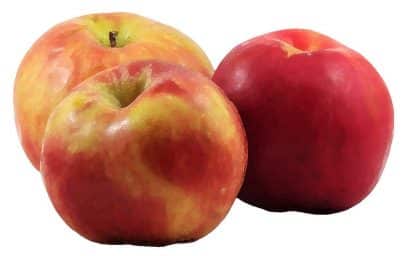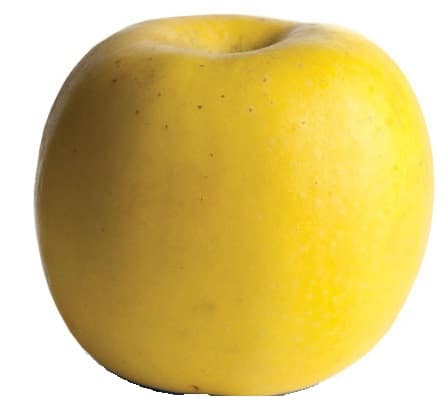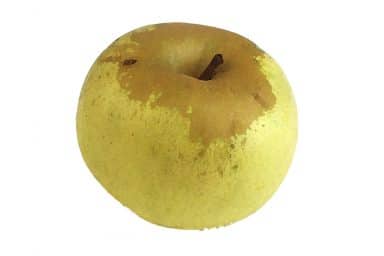When people learn that I write and teach about fruit gardening, I regularly get asked “What’s your favorite apple?” It’s a simple question, but about as easy to answer as which of my children is my favorite. I’d love to say “all of them, since they are each unique.” With several thousand apple varieties to choose from, though, I really do have to narrow it down, and you will be wise to do so, too, if you are thinking about planting fruit trees of your own.
Your home orchard will bring you the most pleasure if you plant what you truly enjoy eating and using. Here are some tasty ways you can zero in on the very best picks. Although you may have a favorite among your typical grocery store selection, to find especially interesting varieties that go far beyond the commonplace, consider visiting apple and cider festivals or tasting events, U-pick orchards featuring heirloom fruit, makers of hard cider, or buying gift box samplers.
Your local farmers’ markets will provide a clue as to what varieties grow well in your area. Some of the vendors will likely offer taste samples. Most are happy to answer some questions as well: Does the variety keep well or do you need to use it quickly? Where does this apple show its best character: munching and crunching as a fresh snack, perfect for pie, or simmering into sauce? This is important information to know if you envision planting some fruit trees of your own.
Horticulturally, a key point to note is whether a variety requires a long growing season to ripen properly. A lament I hear from new, amateur pomologists (those who cultivate fruit trees) in my location in the northern United States is that when they grow the highly-touted Granny Smith it is a flat, tasteless disappointment. Yes, in our short growing season it is. But the apple is not at fault. Grown in the right place and used in a way to show its best quality, it can be a suitable apple. However, that “right place” is the long growing season and moderate climate of the Pacific Northwest, not short-season northern Michigan. Truth is, Granny is really a baking apple, not at its best for fresh eating. Northern Spy or Rhode Island Greening will be far more satisfying choices in shorter growing season regions.
Apple varieties that thrive in the crisp, sunny days and cool autumn nights of the upper Midwest and New England include McIntosh, Macoun, and Jonathan. Yet, try these same apples grown south of the Mason-Dixon line and they may be soft and unsatisfying. Down South, turn instead to Arkansas Black, Grimes Golden or Winesap.
For a fun fruit foray, make apples the life of your own tasting-party extravaganza! Collect a few supplies: paring knives, small cutting boards, sampling plates, sticky labels, and writing utensils. Whip up simple evaluation sheets with sample numbers across the top. List characteristics such as taste, crispness/crunch, juiciness, texture, aroma and overall impression, and use a simple 1-to-5 rating scale.
Gather a group of friends and families. Ask each friend ahead of time to bring a specified category of cheese. My local Cheese Lady suggests a classic sharp, hard cheddar or asiago; a light, creamy brie or Havarti; a salty gorgonzola or Peña Gorda; and a sweet gjetost or Beemster XO goat milk Gouda that hints of caramel. This will offer a pleasing and complementary assortment to set off the flavors of your apples.
You can have your culinary adventure at home by purchasing a varied selection of apples from your local farm market. If you’re up for a field trip, pack a picnic and head for a nearby U-pick orchard. This won’t be your ordinary picking outing, though. It will be a treasure hunt.
Give each participant a label and, with the help of the U-pick staff, a recommendation on a variety. Each variety selection should highlight a different characteristic or flavor component: sweet, tart, juicy, crunchy, astringent. Without disclosing the variety they’ve picked to the rest of the group, each person picks a generous sample of their designated selection. When the group reassembles, each participant will write the name of their sample on the label, stick it to the bottom of the plate, and prepare their plate with sliced apples, cheese, and a sample number. Hand out the rating sheets. Now, let the tasting begin!
Once you’ve discovered your favorite taste sensations, there are a few things to keep in mind as you move on to choosing trees for your home orchard:
• In most cases, you should select at least two different varieties to grow. Apples, pears, sweet cherries, and most plums require cross-pollination. Apricots, peaches, and tart cherries are self-fruitful, so one tree will suffice.
• Consider how much space you have available and whether your soil is a heavier clay or lighter sandy loam. Then select a suitable rootstock, whether it be a large standard-size tree or a dwarf that better suits a compact yard.
• Specialty nursery catalogs are often the best source for less common varieties and advice on rootstock selections that will match your soil.
• Prepare your planting site a year in advance by getting rid of weeds and sod, adding organic matter, and adjusting soil fertility. This will get your new fruit trees off to a strong start toward many fruitful harvests.
Apple Varieties
Every great apple has its time, its place, and its purpose. Some are best eaten lip-smacking-fresh off the tree. Others are best stored to develop the depth of their flavor and then baked into a steaming fresh pie. Some varieties ripen best where the season is long and the climate hot. In contrast, a short growing season, sunny fall days, and cool nights suit others best. For starters, consider these North American “Fab Five” apple varieties:
Cortland
Most favored growing climates: New England, upper Midwest, Canadian Maritime provinces. Crisp and snappy at harvest. Use quickly, has a short storage life and will turn from crisp to soft. Best uses: Salads (flesh is very slow to brown), sauce.
Gravenstein
Most favored growing climates: California, Pacific Northwest, New England, Canadian Maritime provinces. A summer apple with superb sweet, juicy flavor. Best uses: Fresh eating, also for immediate use in pies, sauce, and early cider.

Grimes Golden
Most favored growing climates: Southeast, Midwest/Great Lakes. All-purpose apple but only has a fair storage life. Best uses: Especially good for sauce or cider, both sweet and hard.

Jonathan
Most favored growing climates: Midwest/Great Lakes. Medium-sized fruit with firm, juicy texture and a hint of astringency to its taste. Stores well. Best uses: All-purpose apple that pairs nicely with a sweet variety in pies, sauce, or cider.
Newtown Pippin
Most favored growing climates: mid-Atlantic and south. Long-keeping, best after some storage time. Best uses: Cider, pies, dessert eating. ![]()

